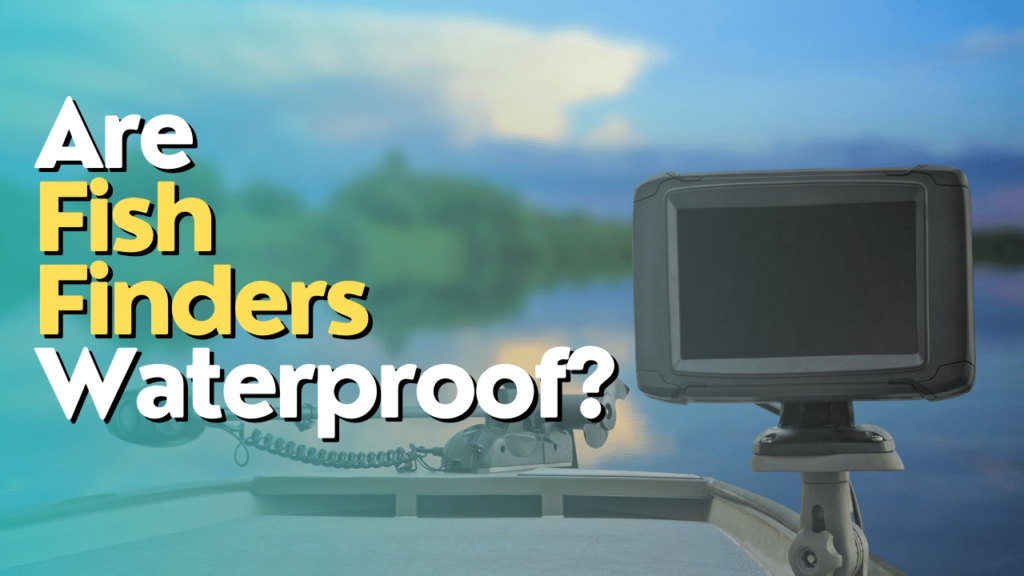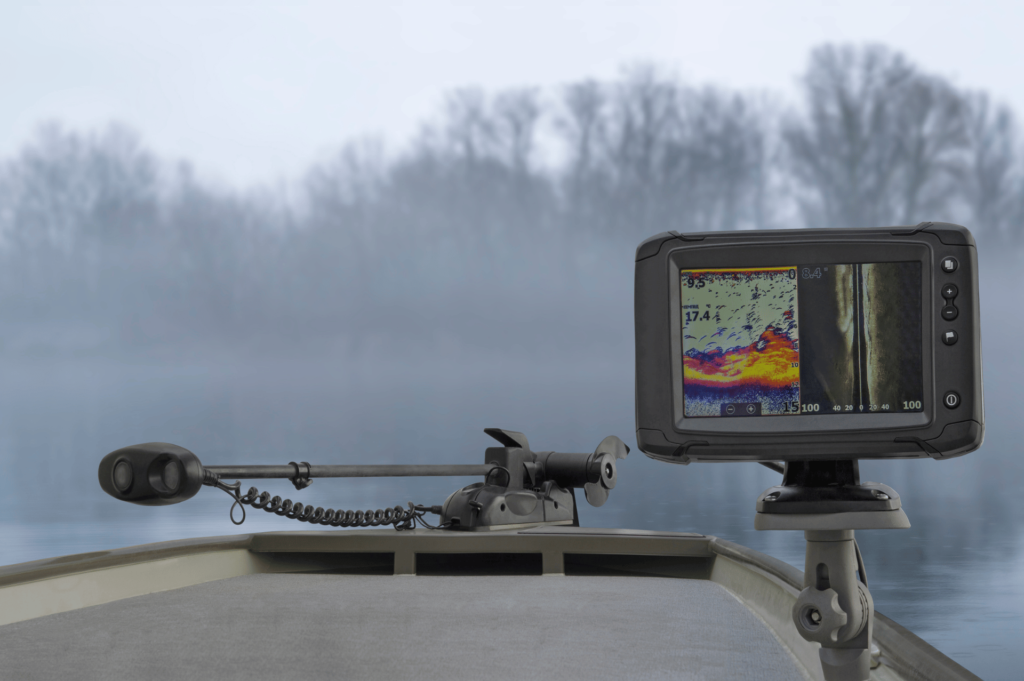
Yes, Fish finders waterproof. It vary in their water resistance levels, with some being able to withstand splashes of water and others being fully waterproof for extended submersion.
Using a fish finder in the ocean is particularly beneficial for deep-sea fishing.
The device uses a transmitter on the ship or boat to send signals into the water, while the sonar device detects reflected waves from the fish and relays the information back to the transmitter.
This allows fishermen to locate and track fish in the vast depths of the ocean.
You may also like to know: How does a fish finder work?
Table of Contents
Are All Fish Finders Waterproof, Or Only Specific Models?

Fish finders can vary in terms of waterproof capabilities. Some models are only water-resistant and can handle occasional splashes, while others have higher ipx or jis waterproof ratings, allowing them to work even when submerged for longer periods.
Fish finders are essential tools for anglers, allowing them to locate fish in the water and improve their chances of a successful catch. However, when it comes to using fish finders in wet environments, such as in rain or on a boat, the question of waterproofing arises.
Let’s explore:
Not All Fish Finders Are Created Equal When It Comes To Waterproofing. Here Are Some Important Points To Consider:
- Water-resistant vs. waterproof: Fish finders usually have a certain degree of water resistance, which means they can withstand splashes of water. However, not all fish finders are fully waterproof, meaning they can be submerged in water without any damage.
- Jis and ipx ratings: To determine the level of waterproofing, fish finders are often assigned a jis (japan industrial standards) or ipx (international protection) rating. These ratings indicate the device’s ability to resist water ingress. The higher the rating, the better the waterproofing capabilities of the fish finder.
- Specific models: While some fish finders are designed to be fully waterproof, others may only have water resistance properties. It’s important to check the specifications of the model you are interested in to ensure it meets your specific needs.
- Consider the environment: When choosing a fish finder, consider the type of environment in which you’ll be using it. If you primarily fish in calm lakes or rivers, a water-resistant fish finder may be sufficient. However, if you venture into rough waters or plan on using the device in heavy rain, it’s advisable to opt for a fully waterproof model.
- Manufacturer recommendations: Manufacturers often provide guidelines on the water resistance or waterproofing capabilities of their fish finders. It’s important to follow these recommendations to prevent any damage to your device.
- Proper care and maintenance: Regardless of the waterproofing capabilities of your fish finder, it’s important to take proper care and maintenance measures. This includes keeping the device clean, drying it thoroughly after each use, and storing it in a safe and dry place.
How Do I Determine The Waterproof Rating Of My Fish Finder?

Fish finders are generally weather resistant, but the waterproof rating can vary. Some fish finders can withstand splashes of water, while others can be submerged for extended periods. It’s important to check the specific waterproof rating of your fish finder to ensure its durability in water.
Fish finders are valuable tools for anglers, but it’s important to know if they are waterproof, especially when using them in wet and harsh conditions. To determine the waterproof rating of your fish finder, consider the following factors:
- Ipx rating: Check if your device has an ipx rating. The ipx rating system measures the level of protection against water and moisture ingress. The higher the number, the better the protection. For example, an ipx7 rating means the fish finder can withstand immersion in water up to 1 meter for 30 minutes.
- Jis rating: Some fish finders may have a jis rating instead of an ipx rating, which provides a similar level of water resistance. Jis ratings are often indicated using letters and numbers. For example, jis7 signifies that the fish finder can be submerged in water for a certain amount of time.
- Manufacturer specifications: Review the product specifications provided by the manufacturer. They usually indicate the level of water resistance and any specific recommendations for usage around water.
- User reviews: Look for user reviews or testimonials that mention the waterproof capabilities of the fish finder. Real-life experiences from other anglers can provide helpful insights into how well the device performs in wet conditions.
- Warranty information: Check if the fish finder comes with a warranty that covers water damage. A solid warranty can be a good indicator that the device is designed to withstand water exposure.
Remember, water resistance does not guarantee full protection against water damage. It’s essential to follow the manufacturer’s recommendations for proper care and maintenance to ensure the longevity of your fish finder.
Are The Transducers That Come With Fish Finders Also Waterproof?
Fish finders typically come with waterproof transducers, allowing them to function in water without any issues. These transducers are designed to withstand splashes and can even be submerged for extended periods, offering reliable performance in various weather conditions.
Fish finders are essential tools for anglers, helping them locate fish and navigate water bodies more effectively. One important aspect to consider when purchasing a fish finder is whether the transducers, which are responsible for transmitting and receiving sonar signals, are waterproof.
Waterproof transducers: Many fish finders come with waterproof transducers. These transducers are designed to withstand exposure to water, ensuring their functionality even when submerged or exposed to splashes.
Conclusion
Fish finders can be waterproof, but the level of water resistance may vary. Some models are only resistant to splashes, while others can withstand being submerged for extended periods.
